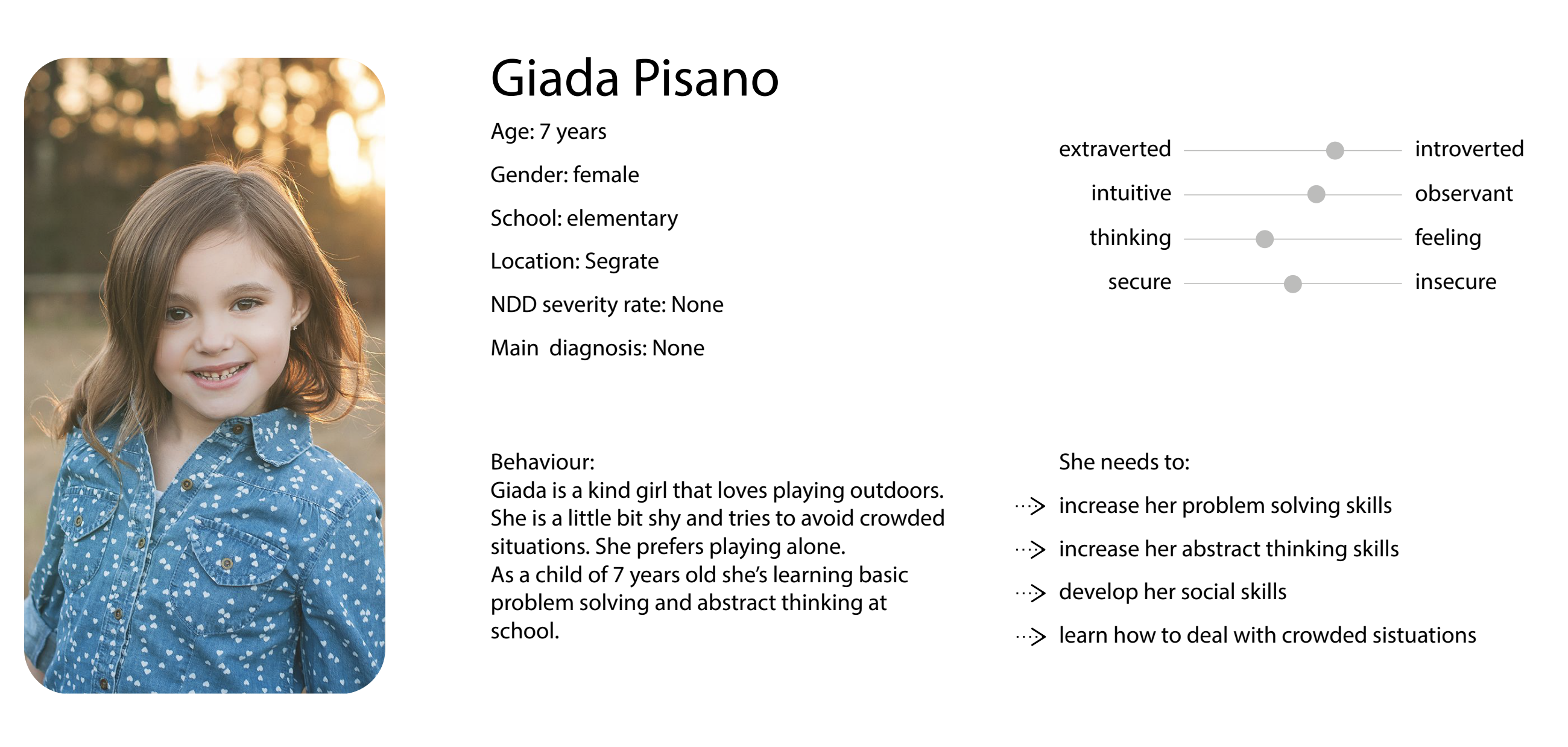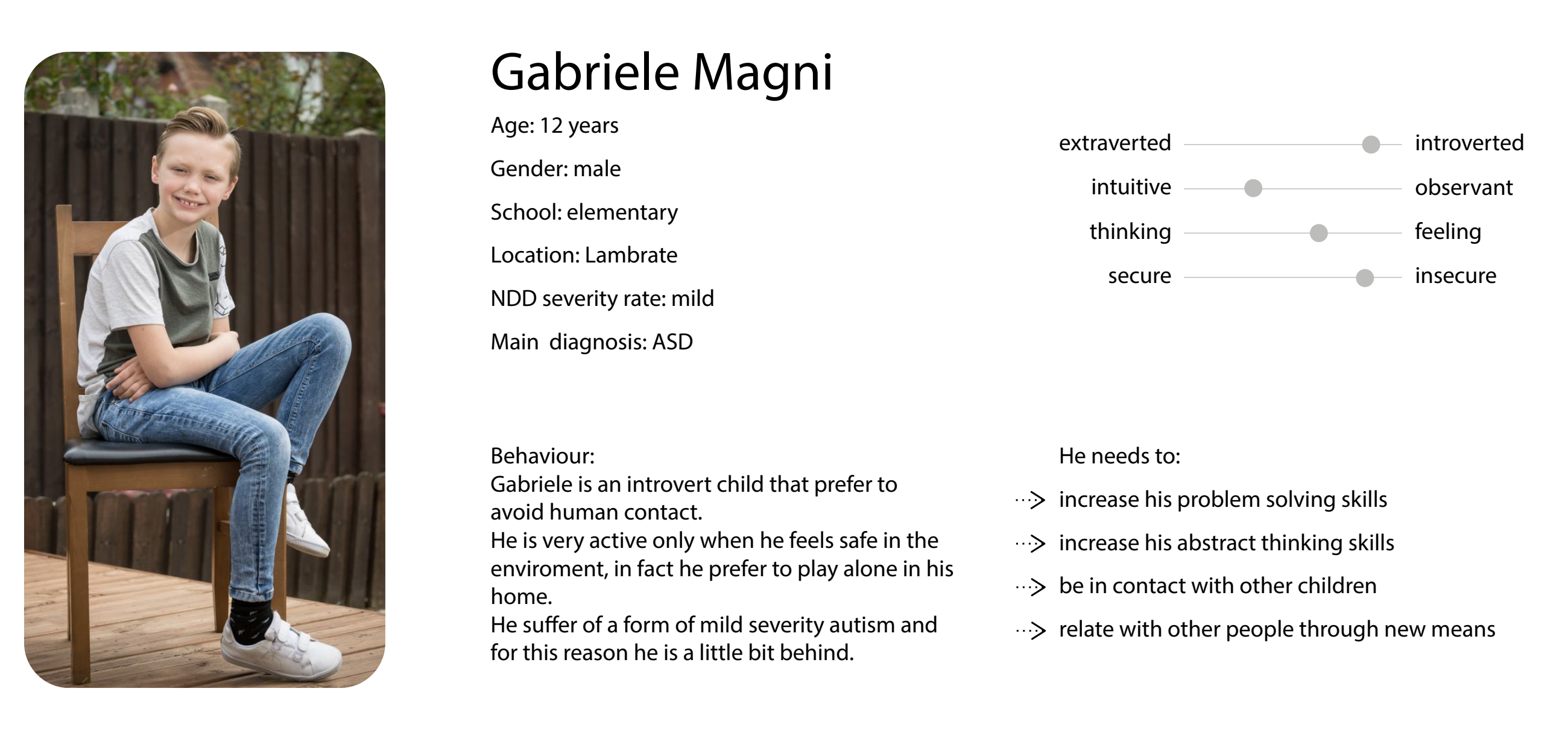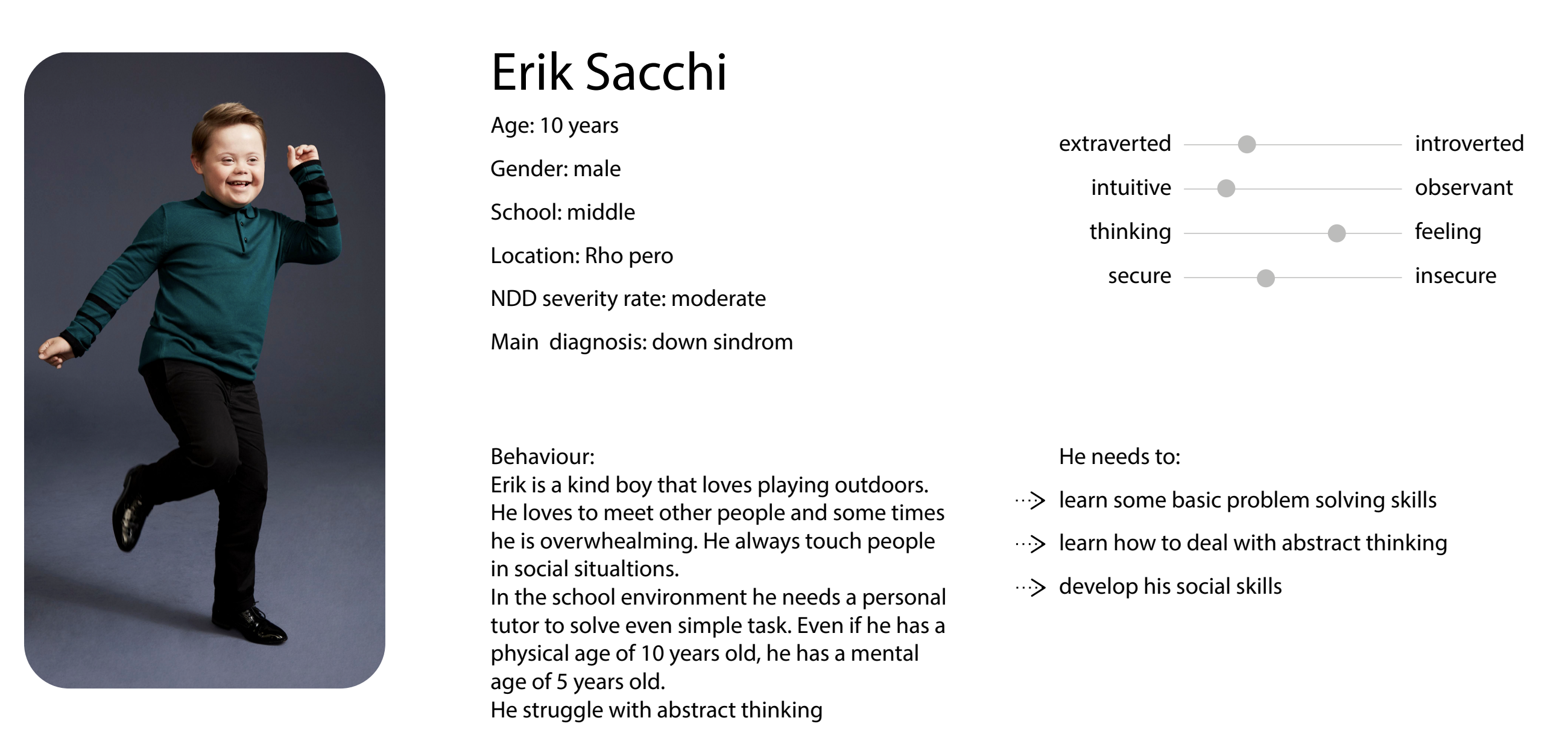UX, INTERACTION DESIGN, PHYSICAL PROTOTYPE
Smart Buckets: enabling interfaces
An interactive system for NDD children and therapists, composed by smart containers connected to a multisensory room and a tablet application. The system is capable of recognizing multiple objects.
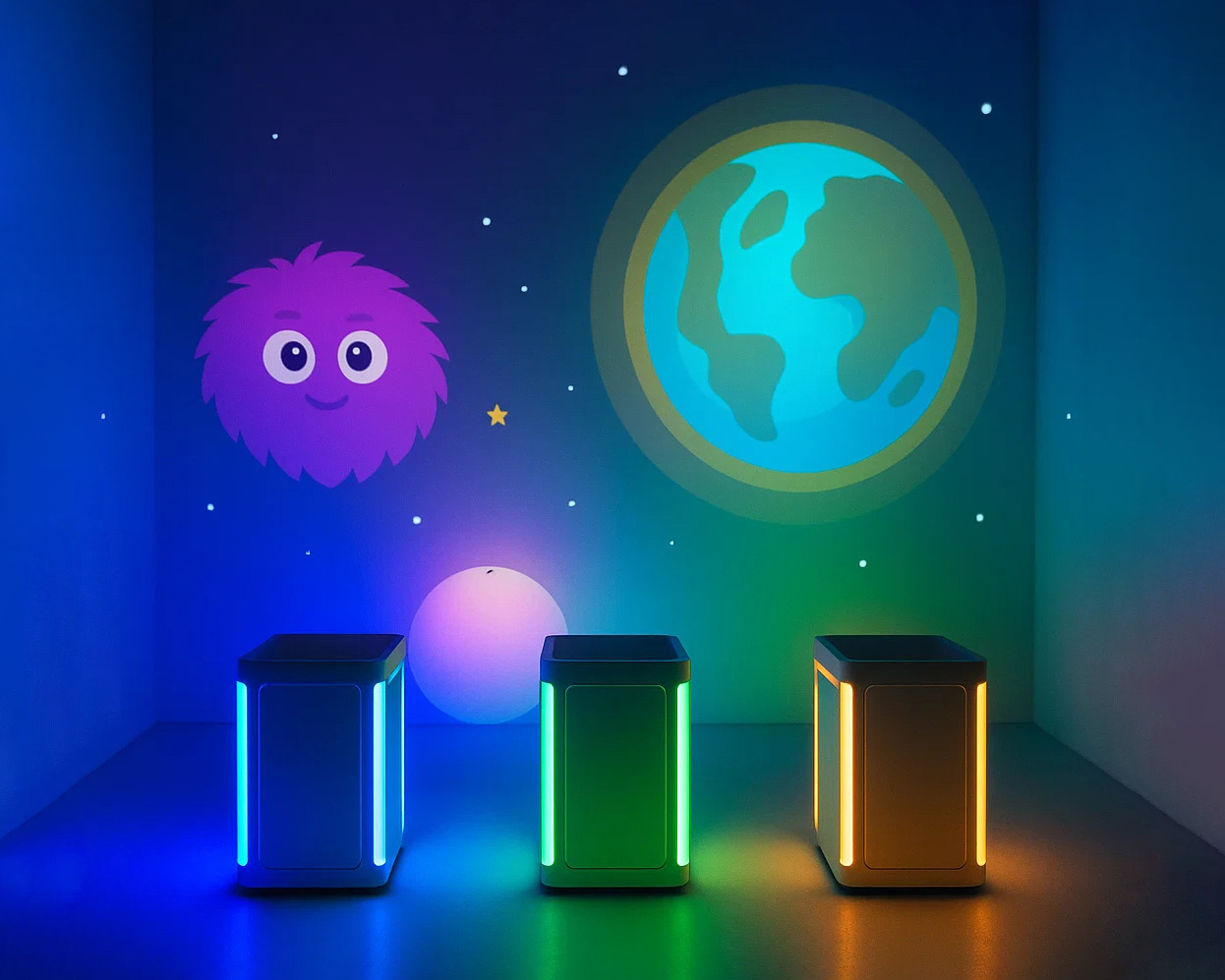
Timeline
6 months
Team
1 interaction designer (me) and 1 computer engineer
My Role
Researcher, Innovator, Product & Interaction Designer, Prototyper, Front end Developer
Challenge
How can we design an engaging, tangible, and highly customizable learning tool for children with neurodevelopmental disorders (NDD) that simplifies the work of therapists and integrates seamlessly into a multi-sensory environment?
Solution
A system connected to a multisensorial-room that recognize multiple objects using an innovative weight-based sensing method. Controlled by a tablet application designed for therapists, the system enables the creation of personalized, trackable, and engaging edutainment activities.
Overview
"Smart Buckets" is an interactive system designed to empower therapists and engage children with Neurodevelopmental Disorders (NDD) through tangible play.
The project began with in-depth desk research which revealed that tangible, embodied experiences are crucial for cognitive development in NDD children and that smart toys can significantly increase their engagement and attention spans .
The core innovation of the project was the development of a cost-effective and highly reliable multi-object recognition system. After evaluating technologies like RFID and WiFi Signal Strength, we pioneered a method using digital scales.
This approach was chosen because it doesn't require modifying objects with tags or electronics, making the system infinitely extensible for therapists, and it proved to be a reliable and inexpensive solution.
To empower therapists, I designed a tablet application, which achieved an excellent 92.18% usability score in SUS testing.
The system is currently deployed in a special education facility in Rome, where it has obtained a positive response by therapists and high level of engagement and costant progress by NDD children.
"Smart Buckets" stands as a complete, validated solution that balances user needs, technical constraints, and social impact.
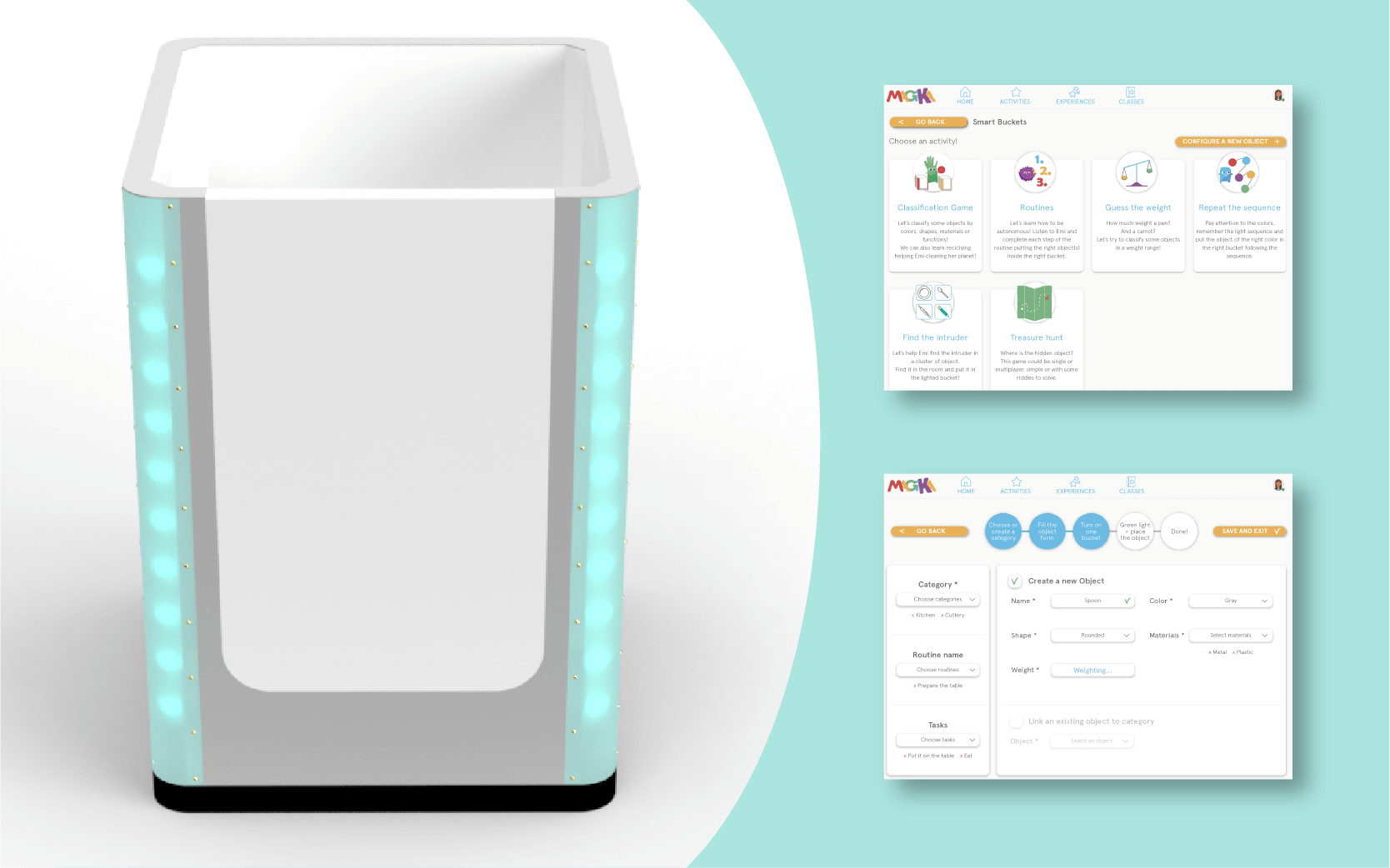
Research and Analysis: Understanding Complex User Needs
My research phase for Smart Buckets exemplified a rigorous, multi-method approach to understanding a particularly sensitive user group.
Working with children with Neurodevelopmental Disorders (NDD) required extensive desk research across 20+ academic papers from fields including Human-Computer Interaction, Assistive Robotics, and Special Education.
I synthesized findings from neuroscience literature demonstrating how embodied experiences promote cognitive processes and how tangible interfaces can stimulate higher-level cognitive skills like mental imagery, working memory, and problem-solving.
The research revealed critical insights: among NDD children, reaching and maintaining engagement is a precondition for any learning activity, and therapists reported that participants using smart toys manifested signals of engagement 3x faster and maintained attention 2x longer than during regular activities.
I translated these academic findings into actionable design principles, creating three detailed personas representing different severity levels of NDD (none, mild, moderate) with specific behavioral patterns and learning needs.
Through stakeholder mapping, I identified a complex ecosystem including primary users (NDD children and neurotypical children), secondary users (therapists and teachers), and tertiary stakeholders (families, experts, financing partners).
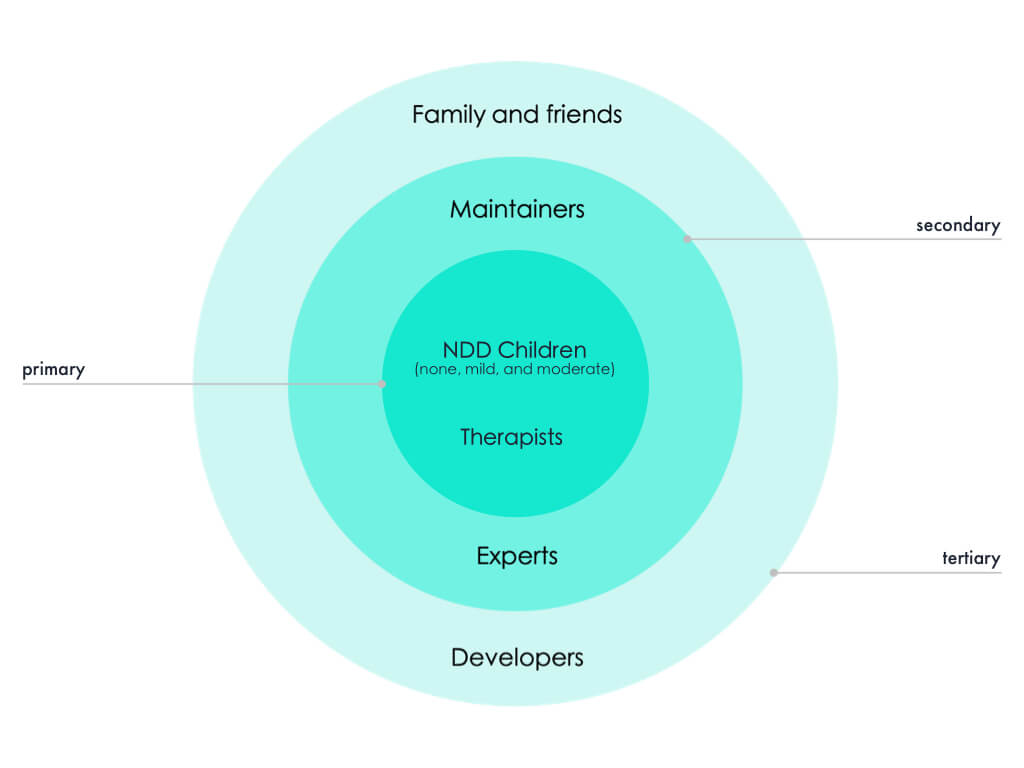
This comprehensive analysis led to dual requirement sets: for children (edutainment value, tangible interfaces with familiar affordances, multimodal feedback) and for therapists (customization capabilities, automatic data collection, ease of use).
Innovation Through Technical Problem-Solving
My process began with a critical technical challenge: how to achieve reliable multi-object recognition in a cost-effective and scalable way. I analyzed three potential technologies: WiFi Signal Strength (WFSS), RFID, and weight-based sensing with a digital scale.
While RFID is a common solution, standard HF tags interfere with each other, and UHF systems capable of multi-tag reading were too expensive. WFSS required heavily modifying each object with active electronics and a battery, making it tedious and costly.
The most innovative and strategic path was to use a digital scale. This method leverages an object's intrinsic property—its weight—and therefore requires no modification to the objects, giving therapists infinite flexibility to add new items to activities.
By choosing this route, I created a reliable system that was also affordable for our target institutions.

3D model and physical object
The physical design of the Smart Buckets was guided by the principles of safety, accessibility, robustness, and reproducibility.
The containers were designed from scratch to be versatile and stackable, with rounded corners for safety and a removable door to ensure accessibility for children in wheelchairs.
To ensure anyone could replicate the design, I chose common, DIY-friendly materials. The main structure is built from plywood, with custom L-brackets for the corners designed by me and produced with a 3D printer.
These brackets also house the LED strips that provide visual feedback to the user.
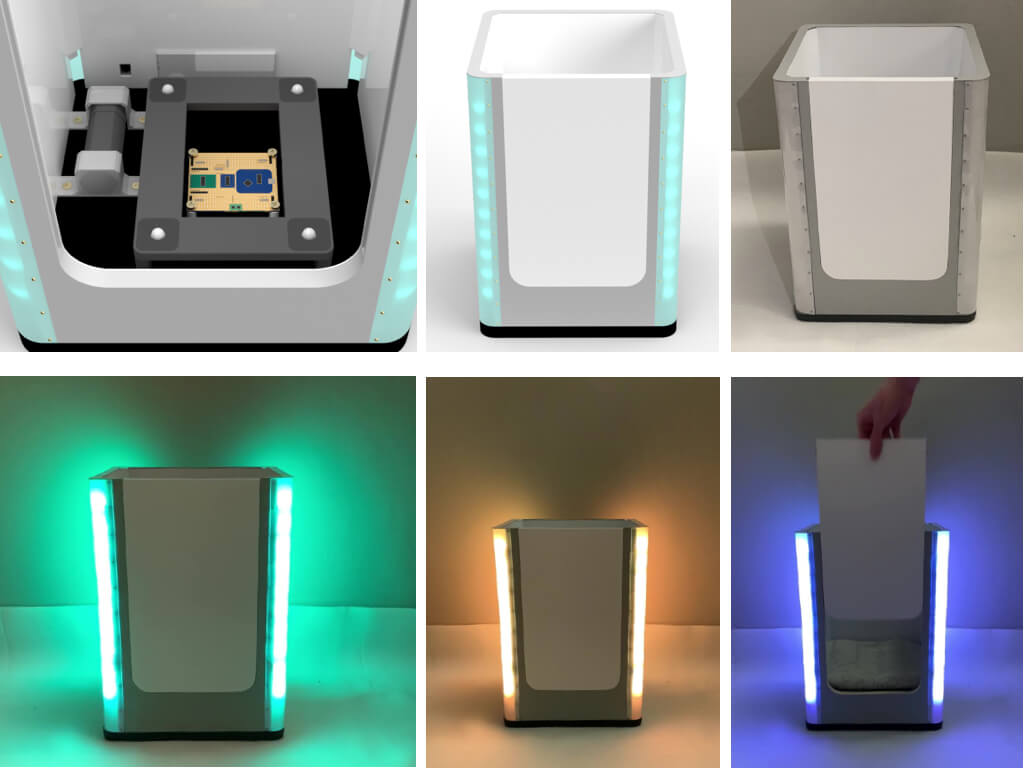
Tablet application
To give therapists full control over the system, I designed a tablet application that serves as the command center for all activities. To ensure a seamless experience, the "Smart Buckets" section was designed as an integrated module within the existing "Magika" tablet application already in use at the facility.
From the control panel, therapists can perform several key actions:
- Configure Objects: A simple workflow allows them to add new objects to the system by filling out a form and weighing the object with one of the buckets.
- Select and Launch Activities: Therapists can choose from a list of pre-designed educational and entertainment activities, such as the "recycling game" or "color classification".
- Supervise and Get Data: During sessions, the app provides real-time information and collects data automatically, which can be viewed later to track a child's progress.
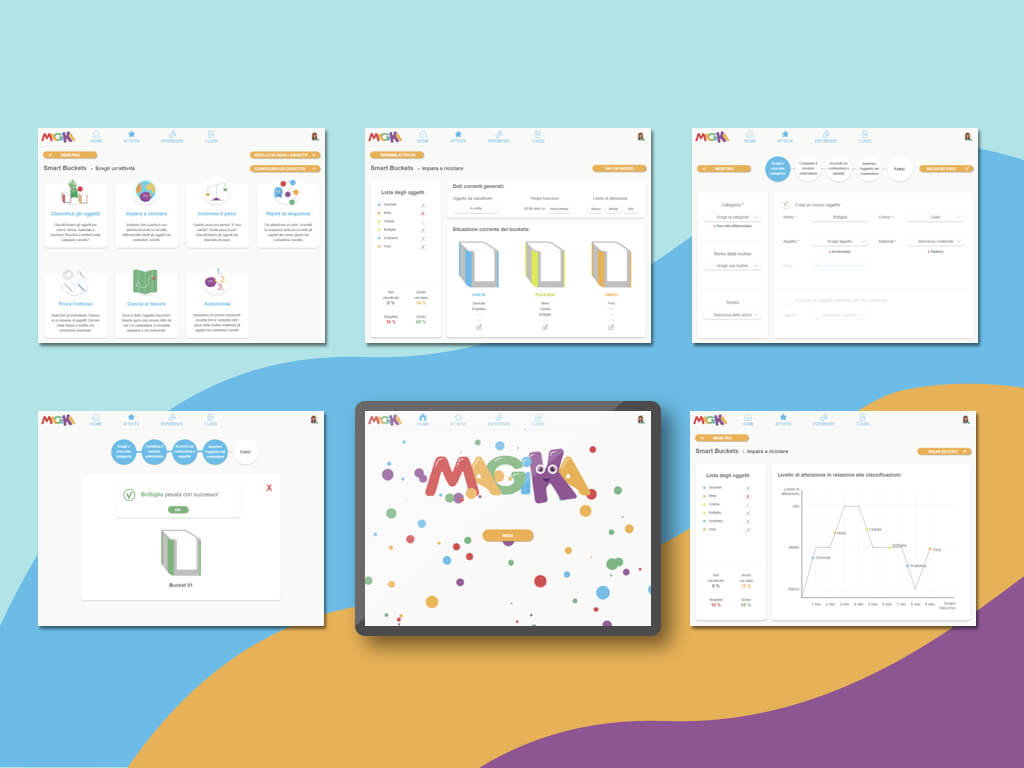
The Validation: Proving Usability with Data
To ensure the therapist's control panel was truly intuitive, I conducted formal usability testing with 8 participants, whose ages ranged from 28 to 63, representing the diversity of special education professionals.
I created a detailed test protocol where each participant had to complete two complex tasks:
- Configure a new "bottle" object for the recycling activity.
- Run a classification session, using features like the timer and hints.
The results were outstanding and validated the design's effectiveness:
- System Usability Scale (SUS) Score: The application achieved a final score of 92.18%, placing it in the "excellent" category of usability.
- Task Success: All 8 participants successfully completed both tasks without any help.
- Efficiency: Even for complex configuration, the average time to complete the first task was just 85 seconds.
This data-driven validation proves that the final design is not only innovative but also exceptionally easy to use for its target audience.
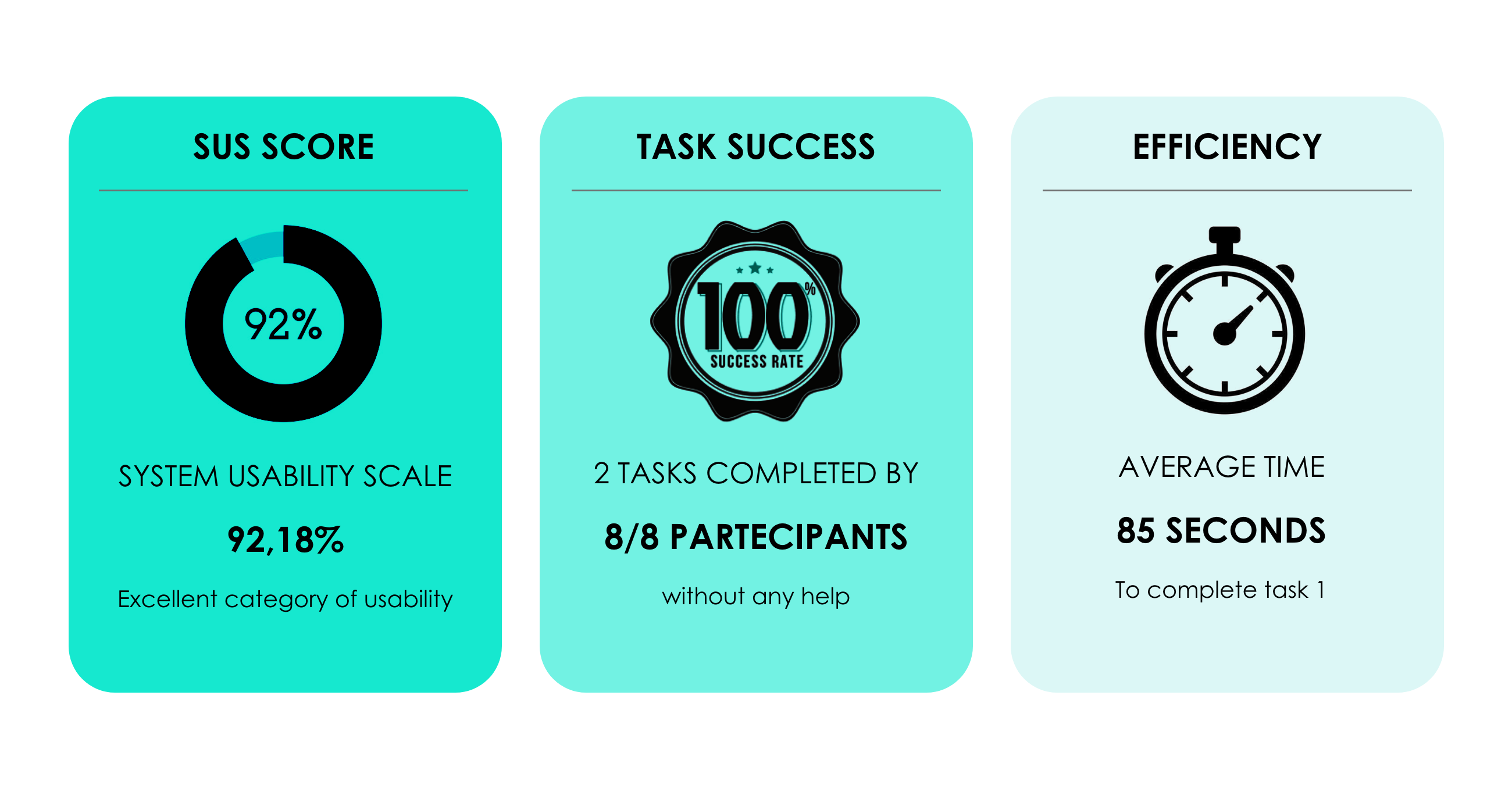
Computer human interaction conference partecipation
The rigor of the Smart Buckets design process was formally recognized by the academic community. We submitted a research paper and video, Smart Buckets: An Interactive Interface Enabling Sensory Integration, to the prestigious Computer Human Interaction (CHI) Conference. The work was accepted into the conference proceedings, offering critical peer validation of the Tangible User Interface and its therapeutic approach. While the project was not selected for the final presentation track in Hawaii, its true success lies in its lasting, real-world impact: the Smart Buckets system is currently being used by children and therapists in a special school in Rome, demonstrating its proven value as a functional, accessible, and robust assistive technology.
Project Infos
Politecnico di Milano - Course of Advanced User Interfaces
September 2019 - February 2020
